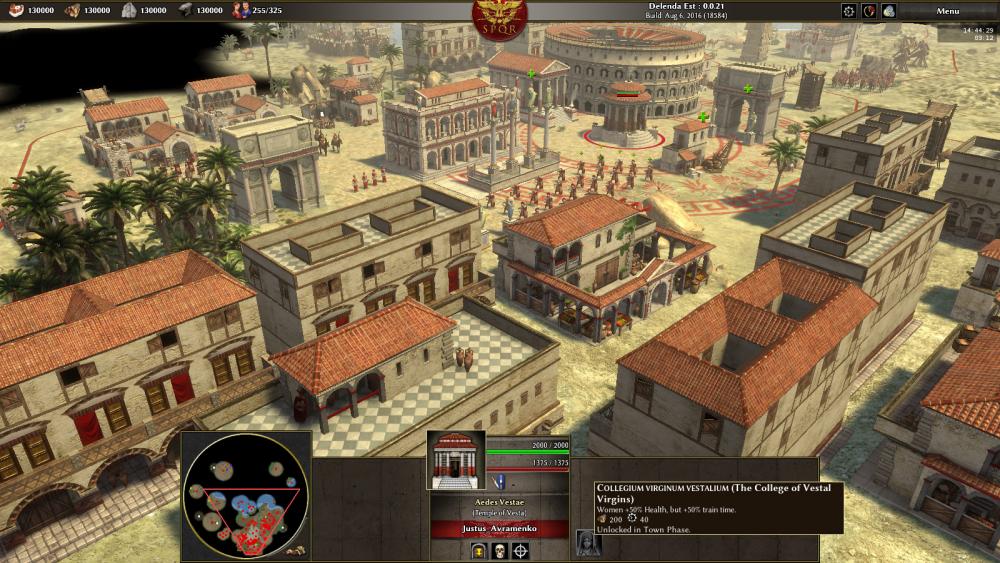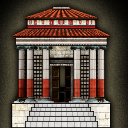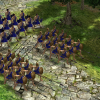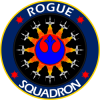Leaderboard
Popular Content
Showing content with the highest reputation on 2016-08-07 in all areas
-
2 points
-
MAPS AND BIOME GUIDE FOR RANDOM MAP SCRIPTERS The following is a quick guide for the Random Maps in 0 A.D. It is an evolving document, based on constant input from scripters and others. Purpose: To assist scripters in designing and coding the Random Map Scripts (RMSs) for the game. To provide a semblance of unity in the RMS design, even though the RMSs for the game will be scripted by multiple people. Planned Random Maps Note: The graphics for these were made many years ago in the Age of Mythology scenario editor. The map description were likewise written years ago, before many changes in the game design. Disregard any mentioning of "settlements" as they have been scrapped from the design in favor of the existing dynamic territory design (this thread is not the place to discuss this change). Also, mention of "seasons" is problematic. This guide will continue to evolve as the game evolves. Table of Contents: Alpine Alpine Valleys Alpine Lakes Pyrennean Sierra [*]Desert Cradle of Civilisation [*]Mediterranean [*]Polar [*]Savanna [*]Steppe [*]Temperate Rhine Marshlands [*]Tropic [*]Resource Distribution Quick Reference Alpine Region: Central European "Alps", Southwestern European "Pyrenees", or North African "Atlas", "Caucasus", mountain and valley. Characteristics: Few broad open spaces for building large structures except relatively close about Civ Centres and in a few other places. Snow covered peaks and much in the way of coniferous forest, some broadleaf deciduous forest. Can snow at any season of the year except summer; rains periodically during summer. If Seasons are not selected, Summer is the default and the map is very green. Can have rivers and streams in the valleys or feeding into them including rapids, rocky fords, and cataract waterfalls, or lakes large and small. Alpine is typically heavy in wood, stone and metal, and moderately well populated with animals near forest and in meadows at all levels. An excellent defensive map as avenues of approach can be blocked by defensive structures. This map is a land map or water map that could have some sea water on it if valleys opened out onto sea on both sides. This map may have valleys running coadjacent with passes through the mountains connecting them, or passes connecting stream watersheds running both east and west down from the centre. Resource Distribution: Scale from 1 (low) to 5 (high) Food: --Berries: 3 --Animals: 2 Wood: 4 Stone: 5 Metal: 4 Treasures: 3 Flora Objects (Trees and Plants): Austrian Black Pine (highlands) Nordmann Fir (highlands) Dead Conifer (highlands) Common Oak European Beech European White Birch Maple Mountain Ash Apple Pear Dead Deciduous Fauna Objects (Animals): Wolf Auroch Bull Bear Deer Pheasant Rabbit Auroch Cow Sheep Horse Fish Goose Eagle Gull Vulture Alpine Land types:Alpine Valleys Arranged along an east-west axis. Might have small streams feeding to or running the length of valleys in which waterfalls and rocky fords interrupt riverine transport. Frequent shallows including rocky fords for crossing. Passes through mountains from valley to valley are principal means of access to other Civ Territories. Civ Territories are divided at mountain passes and/or by tributary streams. Alpine Water types:Alpine Lakes Traversing east-west. Characterized by high mountains bordering deep valleys strung with mountain streams and broader finger-like lakes. Will have fords but not have rocky fords crossing waterways that would bar the passage of watercraft from lake-to-lake along a simple or more complex waterway system. Some shallows for crossing. Lacks open land for building. Mostly at lakesides or along streams in valley bottoms and at passes through the high mountains. Civ Territories may be divided at mountain passes and or by the narrower tributary streams in valleys. Pyrennean Sierra Characterised by high mountainous spine crossing the centre of the map east-west. Flanked on both sides north and south by subalpine meadowlike terrain. Stream drainage with shallows for crossing coming off the mountains to either end of the range into an area of ocean that provides for two additional ways around the central massif. Civ Territories are divided by passes through the mountainous spine and/or stream courses leading off to either ocean body of water. Desert Note: The old "Semi-Arid" Map-type has been combined into this one. Region: This map replicates the deserts of the Sahara or Arabia and to some extent the Iranian plain. Characteristics: A dry terrain map where it only rains in cloudbursts during the summertime and then only occasionally, or if locationally near the Nile delta very occasionally receive some light rains that blows in from the north during winter. It may be wide open with sparse clumps of palms primarily clustered about infrequent oasis type small lakes, marshes, muddy watering holes, or ponds, or strung along infrequent watercourses or in the mouths of canyons. Can have canyons and craggy rather barren 'peaks' spotted about. Sandy terrain is a major characteristic with some areas of dunes being evident. Desert is not well endowed with food or wood but is very well endowed with stone and metal. If it is scripted to have lots of canyons and cliffs on it, it is a highly defensible map; if not it is more wide open to attack than any other but Steppe and a very open Savannah. Desert may be either a land map or a water map with river crossing or seas adjacent to the land. Resource Distribution: Scale from 1 (low) to 5 (high) Food: --Berries: 1 --Animals: 1 Wood: 2 Stone: 5 Metal: 5 Treasures: 2 Flora Objects (Trees and Plants): Date Palm Senegal Date Palm Pistachio Pomegranate Dead Palm Dead Conifer Dead Deciduous Fauna Objects (Animals): Crocodile Lion Bear Cheetah Gazelle Hippopotamus (African Desert maps only) Partridge Rabbit Chicken Ostrich Oryx Goat Sheep Horse Camel Hawk Vulture Eagle Desert Land types: Neareastern Badlands The map is characterised by being a jumbled maze of cliffs, canyons, rugged and barren mountains and passages going every which way. It is probably the most defensible map in the regular game. Civ Territories are divided proportionately to terrain on the map. Saharan Oases Each civ's starting Civ Centres and settlements are positioned near an oasis spotted about an otherwise bleak and sandy desert that is wide-open to assault and depredation. Along with Steppe Anatolian Plateau, they are the 'fastest' maps in the regular game. Civ Territories are divided proportionately to terrain on the map. Median Oasis This map is a knock-off from the Oasis map in AoK or AoM, but with a few unique features. Civ Territories are divided by terrain features, principally cliffs and rugged vegetationally denuded highlands with passages through them, arranged like the spokes of a wheel around a large desert oasis. The map is fairly defensible and can be walled-in early on, though continued wood harvesting on a narrowed front may necessitate expanding them. Starting territorial Civ Centres are toward the centre where the land is generally better endowed with resources requisite to development. Settlements are 'outback' amongst somewhat rugged lands with the requisite resources to barely support each province-being quite short on wood and animals. Resource locations are imbalanced, with the balance of animal life and wood resource being weighted toward the central oasis while the balance of stone and metal resources are weighted to the outback provinces. Cradle of Civilisation Characterised by 2 rivers running from the head of the Persian Gulf northward. They then meander apart and then towards one another again approximately parallel to one another, dividing the map into 3 approximately equal parts. Marshy near the end of the gulf where the 2 rivers come together with some shallows crossings, permitting access to either of the 3 landmasses. Civs divided to either side of the rivers with the land between the rivers leaving a 'no man's land' initially belonging to no one. There can also be a few otherwise barren but metal-rich islands near the head of the Persian Gulf that are 'there for the taking' not being an integral part of any civ territory. Syria A plains and slightly rolling highlands map. Randomly may or may not have a river with shallows running through it (if it doesn't, is a less defensible and faster map). Sort of a cross between Arabia and Highland maps in AoK. Well balanced in provincial resourcing in accordance with the overall specification for this map category. Civ Territories are divided proportionately on the map. Desert Water types: Nile Delta The visual aspect of this map is that of a river entering from the bottom southern end of the map flowing northward expanding from the wrist into 5 fingers of the hand, thus dividing the land area on the map into 6 approximately equal parts (for as many as 6 Civ Territories). The end of the delta opens onto the Mediterranean Sea at the northern top edge of the map. There is a shallows crossing the Nile at the 'wrist' and another between each land segment further 'downriver' The map is reasonably defensible at crossings but also highly navigable and civ territories are subject to invasion across waterways. Crocodiles can occasionally be a hazard to hominid units on this map at fresh water shallows crossings or immediately adjacent to river banks. There are no marshlands in the delta so this map is highly amenable to farming. Civ Territories divided amongst the 'fingers' of the map proportionately to the number of players. Nile River Characterized as a water map only because the river is broad and in this case cannot be crossed by shallows, putting civs on either side of it at some disadvantage. If co-located to side with enemies, the only allied help that can come would have to transport across the river A good map for 3v3 teaming together or a good one for 1v1 initially defensive because of the breadth of the river. The river as the staff of life enters the map from the south falling over an impassable cataract waterfall (the 1st Cataract) then flows on northward to approximately where it would begin dividing in the delta but in this case terminates at the edge of the map. Crocodiles can occasionally be a hazard to hominid immediately adjacent to river banks. As is the case for oases type maps, animal and wood bearing resources as well as farmable land are imbalanced toward the waterside, diminishing away from it while the converse is true for mineral resources. Civ Territories are divided proportionately along either side of the river (this map won't play for 3-player). Starting Civ Centres are most likely to fall closer to the river than away from it with settlements out somewhat beyond. Fertile Crescent Essentially the same map as Cradle of Civilisation except that numerous canals branch off of the two rivers running in roughly parallel stems 'downriver' bringing even more land into that which is highly desirable for farming (pushing the desert frontier back further away from the rivers). Sometimes they reconnect with the river of watersource and sometimes not (though none connect the two rivers directly). Though the main rivers are broad enough to support any ships manoeuver the canals are narrow and only support the passage of the smallest ships, e.g., merchantman and bireme. Some shallows permit crossing of the canals in places but there are no shallows on the main rivers themselves necessitating water transport over them. Shallows do also exist crossing the marshlands at the lower portion of the map just at where the 2 rivers come together to open onto the northern end of the Persian Gulf. There can also be a few otherwise barren but metal-rich islands near the head of the Persian Gulf that are 'there for the taking' not being an integral part of any civ territory. Civs territorially divided appropriately to the map on either side of and/or between the main river courses. Mediterranean Region: The largest inland sea; between Europe, Africa and Asia. Characteristics: Runs the gamut from semi-tropical with palms and broad-headed pines at the lower elevation ... To fairly high mountains with pine, cypress, fir and oaks of all classes inbetween, palms and pine at low-level along the littoral. Though not heavily forested, has the broadest range of topography and resources on it. Not as wet as Temperature. Never snows except on the top of the highest peaks. Precipitation is predominant and fairly frequent but light during winter except for very occasional periods when it may gloomily rain for several days on end saturating the terrain, rare in early spring and late autumn and non-existent during summer. Long dry summers. Typically good for either attack or defense because of the mix of terrains regardless of type. Either a land map or a water map. Excellent for islands or archipelago map types. Mediterranean is the most versatile of the map categories and well balanced resource-wise. Resource Distribution: Scale from 1 (low) to 5 (high) Food: --Berries: 4 --Animals: 3 Wood: 3 Stone: 4 Metal: 4 Treasures: 3 Flora Objects (Trees and Plants): Mediterranean Fan Palm Cretan Date Palm Aleppo Pine Atlantic Cedar Cedar of Lebanon (Levant map only) Italian Cypress Maritime Pine Nordmann Fir Carob Holly Oak Oleander Olive Citron Common Oak European Beech Fig Lombardy Poplar Grape Dead Conifer Dead Deciduous Fauna Objects (Animals): Lion Shark Wolf Auroch Bull Bear Boar Whale Deer Pheasant Rabbit Auroch Cow Chicken Goat Pig Sheep Horse North African Elephant (African maps only) Syrian Elephant (Levant map only) Egret Fish Eagle Goose Hawk Porpoise Gull Vulture Mediterranean Land types: Andalucia Characterised as the Guadalquivir River and Valley meandering northeast to southwest on the diagonal across the map to its outlet on the Atlantic near Cadiz (Gades). Significant marshland to either side of the river delta, and island just off of the coast of the delta (site of Gades). Mountains to both sides of the fairly broad river valley. Main river navigable along its length. Some shallows crossings of the river and over tributary streams (though tributaries may have rocky fords). Some mountain valley and hilltop building spaces that are highly defensible while the river floodplain is basically flat and not very defensible. Civs territorially divided along the southeast and northwest sides of the main river. (an alternative as 3.4.1a. could be Cisalpine Gaul or the Po River Valley that would have the foothills of the Alps to the north and Appenines to the south while the delta opens out onto the Adriatic Sea to the east) Mediterranean Water types: Pillars of Hercules Mediterranean landforms juxtaposed north and south to the Strait of Gibralter. Massive mountains representing the gates. Either the high Atlas to the South or the Sierra Nevada to the north. Ranges backing up to the edges of the map behind the coastal plain. Civs divided on either side of the strait as appropriate to the map. Balearic Archipelago Islands map constisting of 3 islands, the largest in the centre, on which player placement is randomised for all 3. Highest elevation in the centre of the centre island more-or-less balancing exploitable/buildable area amongst all 3. Civ Territories are divided proportionately to territory but may not be integral to a single island. Cycladic Archipelago Islands map constituted of many smallish islands in excess of the number of players, some of which can be volcanic. All islands have some kinds of resources and may have a settlement if it doesn't already have a starting Civ Centre. Civ Territories are divided proportionally on the map but are inclusive of more than one island. Crete Islands map with a longish very well resourced island oriented east-west on the lower half of the map and a number of scantily resourced 'cycladic' smaller islands arranged across the upper half of the map. Some of the larger cyclads may be volcanic in one form or another (active and inactive). The civs begin in the cyclads, each on its own small island with a starting Civ Centre, but then must emigrate to Crete to survive and expand. This map is the classic Emigration map in the game, a combination of Standard .rms and Nomadic). Peloponnesos A quasi-continental type map. Has two major land areas that are connected by only a very small narrow but barely navigable for passage by the largest of ships canal cutting through a 'land bridge' of no particular signifcance (unless it be towered-up) at about the centre of the map; the northerly one abuts the edge of the map while the southerly is surround by the sea and both are connected via shallows across the canal. Many deep bay and inlet indentations about the periphery of its coastlines both north and south portions; some small islands off the various coasts. Relatively mountainous with valleys extending inland from indentations and a few passes through the mountains. Civ Territories divided around the coast of the peninsula principally by mountain ranges extending from the interior down to the coastal cliffs and promontories. Central Mediterranean Characterized by mediterranean landform landmasses to the north and the south sides of the map representing the boot of Italy and Tunisia/Carthago. A large island rather triangularly shaped (base located on the east, apex to the west) located in the watermass between the two represents Sicily, having good defensible port locations geograpically at Syracuse, Messina, Palermo, and Motya/Lilybaeum (western tip). Much of the central islands coastline consists of cliff with few beaches interspersed making it a difficult place for landings from ships (except around Catania on the east side north of Syracuse). The central island always has an active volcanic mountain in its easternmost side (about centre near the coastline). Few smallish streams accessing hinterlands. Civ Territories divided on each land mass and island as appropriate to the map land proportions. Corinthian Isthmus (based upon RF_Gandalf's Isthmus map done for AoK--in the mediterranean motiff) Civ Territories are divided north and south of the isthmus as appropriate to the map but the isthmus itself is a no man's land belonging to none, and in this case the Corinthian canal doesn't exist. Phoenician Levant Characterised by Mediterranean landforms coastal-mountain-valleys arranged on the north-south axis on the right portion of the map. Represents the land-bridge crossroads of Israel, Lebanon, Syria between Egypt to the south and the Fertile Crescent and Anatolia to the northeast and north. Off the coast to the west is a fairly good sized island (eastern portion of) representing Cyprus which is initially uninhabited but well resourced especially in metal (was a tradtional source of copper--so it may be fought over). The Civ Territories are arranged in a north-south tier divided proportionally on the eastern landmass, the Levant, with starting Civ Centres placed at coastal 'port' locations within. Latium Representative of the central section of Italy The land runs north-south divided by a central range, the Appenines, with seacoasts on either side. Similar to RF_Gandalf's 2 Seas' map for AoK. This map is typical of central Italian typography, flora & fauna, and must always have an active volcano come up in the southwestern land quadrant not far from where the port of 'Naples' would be. Has a few small islands off either east or west coast in the sea. Civ Territories are divided by the Appenine spine to either side and proportionately north-south, and there are few narrow passes through the mountains connecting the sides. Polar Region: The Northern reaches of Europe. Characteristics: (see Northern Lights) Resource Distribution: Scale from 1 (low) to 5 (high) Food: --Berries: 1 --Animals: 2 Wood: 2 Stone: 3 Metal: 3 Treasures: 2 Flora Objects (Trees and Plants): European Larch Generic fir Dead Conifer Dead Bushes Fauna Objects (Animals): Wolf Polar Bear Whale Rock Ptarmigan Reindeer Seal Walrus Fish Gull Vulture Polar Land types: (none) Polar Water types: Northern Lights Polar is a tough map to play, characterised by ubiquitous ice and snow, with some bits or passages of open water only during summer. If seasons enabled, snow 'melts' in patches on land during a relatively brief summer. If seasons are not enabled, it remains icebound all year. If seasons are enabled, when the ice freezes up any ships on the water are frozen in place until the following summer thaw. The weather is often bad, with blowing snow decreasing visibility except in summer; as the arctic is actually arid it never rains in summer. Topographically it can have both hills and cliffs on land and pressure ridges in the ice over water (that bar passage on the ice). Note that Polar biome maps are limited to elevation height of mid-level and below. There is virtually no forest on this map and that only very sparse conifer such as small fir or deciduous larch, usually snow covered--so Wood must soon be purchased at the Trade Centre. It is well enough populated by polar bear, seal and walrus on or near the beach during Summer or resting or moving about atop frozen sea surface and ice islands or floes during Winter, and caribou/reindeer on land in occasional herds at any time of the year. Polar Bears can definitely be a hazard to hominid units on this map. Stone and metal can be found in a normal quantity on the map except that metal can only be found in seams on exposed slope faces; mining or quarrying of any resource stops during winter as the weather is just 'too bad'. Spring, summer and autumn are short seasons on this map, it is winter half of the time. This is a watermap in its northern extremities, though it is only marginally navigable in places for part of the year after the ice breaks up and before it 'sets in' again. Civ Territories divided proportionately as appropriate to the map. Savanna Region: (tbd) Characteristics: An inter-zonal map between better watered mountain and desert or desert and tropic A map characterised by broadly spaced clumps of trees which are a mixture of oaken-leafed evergreen, deciduous baobab, palm type trees and scrub type plants Typically a rather flat plane map having an occasional hummock rises here and there. Relatively open but does have occasional 'strag' trees and rocky outcrops here and there. Note that Savanna biome maps are limited to elevation heights of mid-level and below, low-level. Rains are predominantly and frequently heavy in summer but never snows, dry 'winter' season. Savanna has very little water on it though it may have an occasional lake, stream, or river and dry sandy or muddy lakebeds with water holes; streams may run for wahile and then empty into shallow marshy lake having no outlet to the sea in some cases. It is very green during the rainy season and for awhile thereafter (Autumn) but rather sere at other times of the year. It is well endowed with animals including dangerous ones. Somewhat light on forest and stone but good for metal. Defensively or agressively the map may be fairly well balanced to open to aggression. Resource Distribution: Scale from 1 (low) to 5 (high) Food: --Berries: 4 --Animals: 5 Wood: 2 Stone: 4 Metal: 3 Treasures: 3 Flora Objects (Trees and Plants): Senegal Date Palm Acacia Baobab Fig Dead Date Palm Dead Deciduous Fauna Objects (Animals): Crocodile Hyena Lion Boar Cheetah Hippopotamus Oryx Water Buffalo Wildebeest Zebra Gazelle Antelope Partridge Rabbit Chicken Ostrich Goat Pig Horse African Elephant Fish Flamingo Eagle Hawk Parrot Gull Vulture Savanna Land types: Sahel Situated southside of the Atlas mountain range in North Africa. Is a somewhat open map having almost all of the characteristics stated above except for having no river of significant size. Civ Territories are divided as appropriate to the map. Savanna Water Types: Watering Holes Essentially the same map as the Age of Mythology map of the same name. Rivers or muddy watering holes divide the land between the players. Huntable and Dangerous animals gather around the water courses. Steppe Region: Those lands north of the Black Sea and extending eastward, and the area of the Anatolian Plateau interior of Turkey. Characteristics: Occasional low hills Mostly broad plains. Drier than Temperate. Mostly grasslands with small leaf deciduous forest groves along nearby watercourses. Some conifer groves atop low hilltops to moderately high elevations. Mainly a plain to rolling hills aspect Steppe biome maps are limited to an elevation height of mid-level and below, low level. May snow frequently in winter. Ice floes can appear in winter. Infrequent rains during spring, summer, autumn. Light on both wood and stone, normal for metal, and heavily endowed with herd animals. An open map that is relatively hard to defend. Resource Distribution: Scale from 1 (low) to 5 (high) Food: --Berries: 5 --Animals: 4 Wood: 1 Stone: 1 Metal: 3 Treasures: 5 Flora Objects (Trees and Plants): European Larch European White Birch Weeping Willow White Poplar Dead Conifer Dead Deciduous Dead Bushes Fauna Objects (Animals): Wolf Auroch Bull Bear Antelope Pheasant Rabbit Auroch Cow Chicken Sheep Horse Camel Goose Eagle Hawk Gull Vulture Steppe Land types: Anatolian Plateau Archetypical land steppe map. Broadly open and indefensible. Civ Territories divided as appropriate to the map. Steppe Water types: The Crimea Coastal type map. Only a narrow isthmus connecting it to the northern edge of the map. Relatively mountainous hinterland with some stream drainage generally not navigable due to rocky fords. Civs are territorially arranged around the peninsula. Black Sea Similar to the Mediterranean map in AoK except: It has the steppe motif for the adjacent landforms. Watercourse inlet and outlet at both north (Azov channel) and south (Bosporus) and east (river in Georgia) and west (Danube delta) edges. It is more in the way of wooded to the southerly side of the sea than to northerly, though the northerly is better endowed with animals. Civs are territorially arranged around the central sea. Black Sea Shallows Same as Black Sea except that there are shallows crossing each ot the watercourses breaking up the landmass into four quadrants at north, south, east, and west edges of the map. Temperate Region: Europe north of the Alps. Ranging from the Urals west to the British Isles and on down into northern 4/5th of France and the northwest portion of coastal Spain. Characteristics: On the wet side with rolling hills, knobs, and plains with mixed conifer/deciduous broad-leafed forest. May be heavily forested or open. Marshlands on more open plains near watercourses or coastal Netherlands. May snow in winter; rains periodically at all other seasons of the year. Can have large rivers and some lakes. Can have some cliffs intersecting ranges of hills permitting the passage of rivers through cuts. Temperate may be heavy in wood and animals but is otherwise normally endowed with stone and metal. It is usually a reasonably good defensive map. This map also makes for an excellent watermap for such as coastal, continental, and islands type maps. Resource Distribution: Scale from 1 (low) to 5 (high) Food: --Berries: 5 --Animals: 5 Wood: 4 Stone: 4 Metal: 4 Treasures: 1 Flora Objects (Trees and Plants): Nordmann Fir Common Oak European Beech European White Birch Maple Mountain Ash White Poplar Apple Pear Grape Dead Conifer Dead Deciduous Fauna Objects (Animals): Shark Wolf Auroch Bull Bear Boar Whale Deer Pheasant Rabbit Auroch Cow Chicken Pig Sheep Horse Fish Goose Hawk Gull Vulture Temperate Land types: Cantabrian Highlands Characterised by mid to relatively high hill lands. Many heights have non-forested buildable space at their tops. Some valleys also good for building. Well wooded and watered Other resources good. Watercourses periodically shallowed or have rocky fords. Civ Territories are divided as appropriate to the map. Ardennes Forest Similar to Black Forest in AoK. Densely forested. Variable-sized pocket clearings and narrow passages hugely over-endowed with Wood. Other resources normal. Civ Territories are divided as appropriate to the map via passageways through forested area. Lorraine Plain Cut through the centre by the Loire River traversing east-west with some shallows. Fairly open-wooded and basically flat Plenty of building room. Well balanced resources. Civ Territories are divided by main river and tributaries (with necessary shallows for crossings). Temperate Water types: Eire & Albion Islands type map. Two main islands oriented north-south but east and west of one another, one slightly smaller than the other. Coastlines typically have a lot of cliffs with occasional breaks in them that may or may not be at river mouths. Some smaller islands spotted in the channel between and to the east and north. Nicely balanced for resources. Civ Territories are allocated commensurate to space on the two larger islands. English Channel Albion and Gaul juxtaposed across the English Channel. Coastlines typically have a lot of cliffs with occasional breaks in them that may or may not be at river mouths. Civ Territories are divided between one landmass and the other with north-south separation provided by watercourses on land with occasional shallows. Civ Territories divided by water features as appropriate. Rhine Marshlands The Netherlands. Generally on an east-west orientation. The map has many shallows crossing marshes and limited building space. Open ocean lies to the west. There are few beaches with adjacent land where ports can be developed. Is a hard map to defend on so strategy must be aggressive. Civ Territories are divided as appropriate to the map. Tropic Region: Sub-Saharan Africa and India. Characteristics: Characterized by jungle with lots of forests and and usually open clearings/passage ways. Has an abundance of animal life on it, including dangerous ones. Abundantly endowed with wood, but except in one case, Paradise Lost, it is always a surprise as to how well endowed the tropic map will be with either stone or metal. Except for rain forest types that are always wet or have rainfall at any season, is characterised weather-wise as having only 2 seasons in the year, "summer" as the dry one and "winter" as the rainy one, divided equally. Resource Distribution: Scale from 1 (low) to 5 (high) Food: --Berries: 5 --Animals: 4 Wood: 5 Stone: 2 Metal: 1 Treasures: 4 Flora Objects (Trees and Plants): Queen Sago Palm Senegal Date Palm African Tulip Bird of Paradise Tamarind Curry (Punjab) Coral Dead Palm Dead Deciduous Fauna Objects (Animals): Generic Tropic Animals Crocodile Hyena Leopard Lion Rhinoceros Water Buffalo Fish Shark Parrot Porpoise Gull Vulture Flamingo Hawk African Tropic Animals Cheetah Hippopotamus North African Forest Elephant Wildebeest Gazelle Gorilla Baboon Albatross Indian Tropic Animals Asian Elephant Gharial Rhesus Macaque Tiger Peafowl (Peacock and Peahen) Tropic Land types: Punjab Represents Northwest India, the upper Indus valley. May or may not have 1 or more broad, muddy rivers, complete with small numbers of fish. 33% chance of no river. 33% chance of 1 river. 33% chance of 2 rivers (as shown below). The rivers are navigable by ships, but they do have adequate shallows for easy crossing, essentially making this a "land" map, not requiring ships for transport. Dense deciduous jungles cluster along the length of the rivers. Otherwise, tropical grasslands prevail, punctuated by straggler palm trees. Cameroon Characterized by the deepest, densest, darkest 'rain forest' jungle terrain. Foot units cannot move through forest on this map. Raining miserably most of the time with few periods of bright sunshine, the ground is a saturated sponge that slows movement. A dense jungle 'knock-off' of Black Forest in AoK otherwise having much the same characteristics. Paradise Lost Represents the legendary Lost Mines of Solomon region of the Great Rift Valley of East Africa. A "mix" between Tropic and Savanna biomes. Characterised by occasional high mountains. Includes volcanoes and cliff escarpments. Includes waterfalls, rivers, lakes that are usually connected by the rivers. Open areas of meadow prolifically populated by animals for food along with some that are dangerous. Dense and highly floriferous forests. Perpetual springtime or summer with frequent but not overwhelming rains during winter (that lasts half the year). Well endowed with all resources wood, stone and metal. This map is the highest resourced and most eye-candied map in the regular game. Tropic Water types: Gambia River Characterised by a large broad river running through the basically flatland map, with navigable and fordable tributaries running off it to either side. Dense jungle terrains and clearings to either side of the rivers. This map must be played as a watermap as there are no passages across the Gambia river to the resource-rich Savanna to the North. There are no shallows, rapids, or waterfalls on the broad Gambia River to bar watercraft passage. It can rain pretty frequently year-round on this map but not to the extent of that seen on Cameroon; it is always 'green'. Crocodiles and hippos can occasionally be a hazard to hominid units on this map immediately adjacent to and along watercourse banks. There is ample fishing in the Gambia river, but not in its tributaries. Resource Distribution by Biome Quick reference 1 = Very Low 2 = Low 3 = Medium 4 = High 5 = Very High Alpine Food: --Berries: 3 (3000 Food per player) --Animals: 3 (3000 Food per player) Wood: 4 (60,000 Wood per player) Stone: 5 (50,000 Stone per player) Metal: 2 (20,000 Metal per player) Treasures: 3 (Treasures per player) Desert Food: --Berries: 1 --Animals: 1 Wood: 2 Stone: 5 Metal: 5 Treasures: 2 Mediterranean Food: --Berries: 4 --Animals: 3 Wood: 3 Stone: 4 Metal: 4 Treasures: 3 Polar Food: --Berries: 1 --Animals: 2 Wood: 2 Stone: 3 Metal: 3 Treasures: 2 Savanna Food: --Berries: 4 --Animals: 5 Wood: 2 Stone: 4 Metal: 3 Treasures: 3 Steppe Food: --Berries: 5 --Animals: 2 Wood: 1 Stone: 1 Metal: 2 Treasures: 5 Temperate Food: --Berries: 5 --Animals: 5 Wood: 4 Stone: 4 Metal: 4 Treasures: 1 Tropic Food: --Berries: 5 --Animals: 4 Wood: 5 Stone: 2 Metal: 1 Treasures: 41 point
-
With the recent questions for help it seemed a good idea to us (shieldwolf and I) to create a tutorial about scenario designing. This post is a small part of it to answer recent questions to creating mods for your maps. (The rest of the tutorial is still WIP and deals with the Battle of Gergovia as you might notice from the text and the screenshots). Click on the images to view a larger size. Setting up a mod and run Atlas Create the folder Browse to <0adfolder>/binaries/data/mods and create a new folder. Call it whatever you like, I call it ‘map_Battle_of_Gergovia’ where ‘map’ is used to distinguish it (for us, humans) from the other mods and ‘Battle of Gergovia’ will be the name of the map. Another option is to browse to My Documents/My Games/0ad/mods and create the folder there. The result is equal. Allow your mod to be recognized by 0 A.D. Open the folder and create a file called ‘mod.json’. Make sure that the extension of the file is changed into ‘.json’. This file is very important! Thanks to this the game will read your mod. Now open that folder in any code editor you like. I use Sublime Text 3 (http://www.sublimetext.com/3) but programs like Notepad++ (http://notepad-plus-plus.org/) are possible too. Your file should read something like my file in the image above. The text you fill in shows up later in the Mod Launcher as you can see further down the post. In the dependencies you define what is needed to run the mod. We choose 0ad since we want people to use it with 0 A.D. It is also possible to specify a version but we don't need that here. Save and close the code editor. Run the Scenario Editor with your mod enabled Now run the game and choose ‘Mod Selection’ in the Tools & Options menu. Select your mod in the list and click ‘Enable’. When in mod is in the lower list, click ‘Save Configuration’ and ‘Start Mods’. After the game has restarted, click ‘Scenario Editor’ in the Tools & Options menu. Atlas will now open and you're ready for the next step. Happy painting!1 point
-
1 point
-
Use gedit the text editor set the language to XML as that's the format of most of the unit/building stats using the gnome terminal means you are actually interacting with the bash shell of the operating system while vim is mostly used when you have no graphical environment ie: the command line before Xwindows starts up and you need to change a config file to get Xwindows to run Enjoy the Choice1 point
-
crannog, improved composition creator of concept, stanislas. alternate version1 point
-
1. I was a general nerd surfing the net for articles on random ancient history and came across a website that had some articles. I read more and learned that it was not so much as history article website as a game in development. This was around the Pre-Alpha stage, and I did not see playability in the near future; not long later playability happened with Alpha 1 Argonaut. I started following development not long afterwards. 2. I like history and I like RTS games. 0 A.D. in my opinion does a fantastic job of making an engaging game without overly romanticising the past or botching up on facts. I also love being able to be in a community in which I have seen my opinions take an active role in shaping the game. 3. It's really great to me, and I don't have many complaints except that I would like more updates. They don't have to be that official, but just casual explanations of recent developments would be brilliant. 4. A witty and funny aphorism? Nah. 5. 21 year old fellow from the States.1 point
-
There's no GUI except your text editor, what a lose of time for data editing I've updated the project with the basics, set can now add tags, remove is there, alter can be called multiple times on the same file to group editions by topics and the project can be split in multiple files. Now Template Alterator can have a different purpose than the template extension from sanderd (with subtile differences between overriding and extending), enjoy the choice as someone would say.1 point
-
Now I just want an in-game screenshot before I commit it1 point
-
1 point
-
Thanks. I use the Vestal statue one for the Vestal Virgin tech (instead of the placeholdr).1 point
-
1 point
-
Real live sucks time glad to see your handle again have a new box to play with next week Enjoy the Choice1 point
-
There were some plans to make automatic savepoints every N minutes, potentially keeping also one savepoint for 10 seconds 30s, and 60s ago. But actual rewinding is not feasible to implement. Making the simulation computation faster is needed anyway to reduce lagging.1 point
-
In looking for mods related to Age of Empires II, I found Rome at War and 0 A.D. around Alpha VIII. The more historically accurate nature of 0 A.D. in comparison to even the Age of Empires franchise that inspired it. I have made some minor suggestions in the past, usually typos that I have pointed out in the Suggestions thread, that have unfortunately been overlooked. Unfortunately, with outdated hardware I don't really play 0 A.D. on a regular basis, built in graphics and/or an outdated graphics card tends to do that. 26, male, United States1 point
-
I was just looking for FOSS games. As everybody else mentioned, it's FOSS. But in addition to that, the Wildfire Games team does not give up keeping this game relevant and updated despite the sluggish development speed. Slow and steady wins the race! I'd rather have something like this than what happened to Feudal Wars. Also (although it's natural with history-based games), this game made studying history very enjoyable. Finally, 0 A.D. is the only, and I mean ONLY, RTS game that keeps my hopes up about AAA-quality FOSS RTS, so I really hope that the team keeps it alive. Not even the Spring Games can have this kind of effect on me. Video Tutorials. There are video tutorials on how to playthe game, but they're now outdated even if they are still relevant. There are WRITTEN tutorials on how to make and install mods, contribute to the development, etc., but I'm one of those who learn better on video (stanlista's video tutorial on how to import meshes and their textures to Blender for example). I'm going to bring this up. I consider Empires Apart as your direct competitor. I appreciate both games bring an AoE-style game to the modern era, but I will only accept one as the true successor. Besides that, this is a contest on FOSS vs. Proprietary development models, and I want to say that Open-Sourcing 0 A.D. was the best decision ever made. 27 - Male - Philippines Edit: There was Lion's comment concerning OpenAge. It's also Open Source and that it's more of an attempt of remastering AoE than being a successor, so that's more of an in-house debate. I want to see this Proprietary vs. Open Source competition slugging it out.1 point
-
1 point



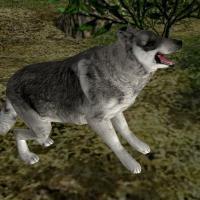
.thumb.png.ce58cea22940c255f5b0a735d5abee36.png)
